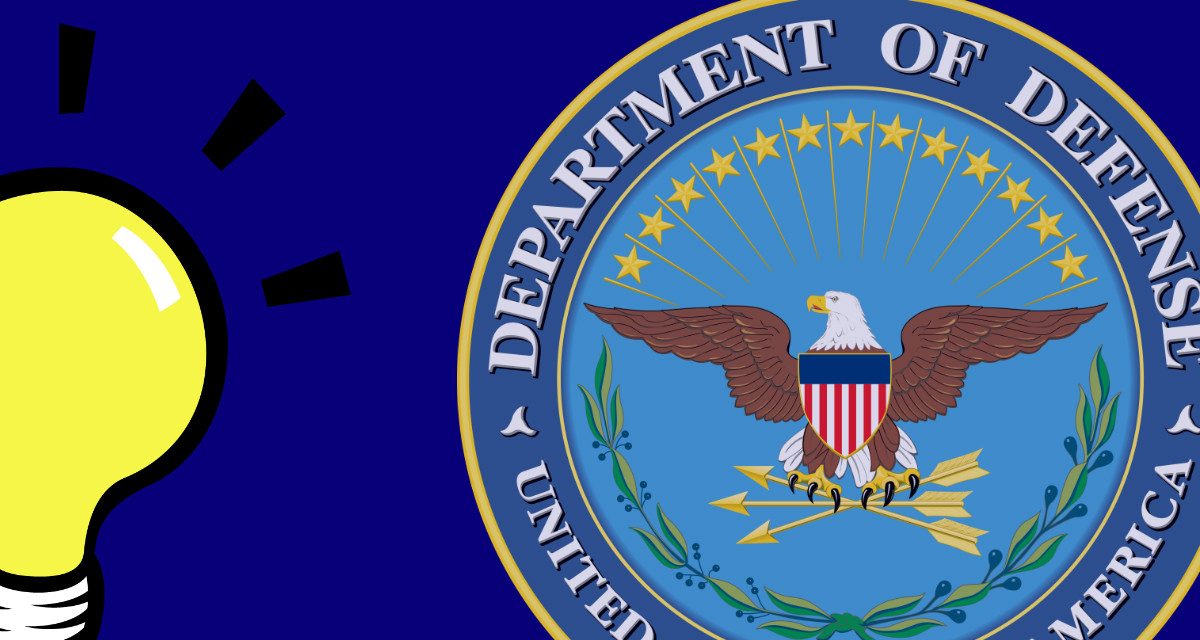Adm. Hyman Rickover, the “Father of the Nuclear Navy,” was once quoted as saying, “If you’re going to sin, sin against God, not the bureaucracy. God will forgive you but the bureaucracy won’t.” So how, in an organization as large and often unwieldy as the Department of Defense, does change occur within a bureaucracy that can be both in opposition to and unforgiving of that change?
Proposals for change within DoD are everywhere. Each week, numerous op-eds, blog posts, talkshow appearances, and think tank studies point out myriad ways in which DoD must evolve or risk some frightening fate. Sometimes these proposals are useful, though many fall short of truly rigorous analysis. Good or bad, what most have in common is a key omission. They avoid the question of how to translate ideas into action. For DoD, where multiple stakeholders must often agree, this part of the proposal is as important as the concept itself, as no good idea is immune to the primacy of process. When we review past incidences of significant change, generally it takes one of four forms: internal-consensus, internal-insurgency, external-collaborative, and external-divisive.
In a department whose business is war and in which the stakes of success or failure are measured in both blood and treasure, change can be both imperative and seemingly impossible. Understanding these processes—and how stakeholders will support a new idea—is thus critical for agents of change to implement new ideas that could prove to be the key to mission accomplishment in combat.
Internal-Consensus
The first of these paths to change, internal-consensus, occurs when the organization, or an element of it, recognizes the necessity for change and controls the processes to bring it about. This type of change is not necessarily easy or outside the realm of debate, though it is more straightforward for DoD to affect since it is handled “in house” through existing ways and means. One example is the Navy’s general recognition in the interwar period of the 1920s and 30s that aircraft carriers would be of vital necessity in the next war. This great leap forward was certainly not easy, facing technical and budgetary issues from the outset, but any showstopping organizational friction was eventually overcome via extensive wargaming at the Naval War College.
It was in this academic forum rather than the blue waters of the Pacific that the carrier concept was socialized, tested, debated, and ultimately found worthy of adoption. The Navy’s willingness to explore the concept was sparked by respected figures in naval culture, such as Naval War College President Adm. William Sims. This sort of mainstreaming is an important facet of internal-consensus change. Early concept adoption by leading establishment figures can spell the difference between success and failure, given DoD’s hierarchical structure. In the case of the carrier, the intellectual weight Sims and his likeminded successors carried at the Naval War College helped urge the institution toward the appropriate course. Quickly, graduates began carrying its lessons of air-sea operations back to the fleet for further experimentation and development. Over the period of more than a decade, advocates for a carrier-centric Navy soon spanned the gamut from the tactical to strategic Navy leaders. In this case, the internal-consensus approach generated a winning formula that eventually translated to adoption and future combat success in the Pacific during World War II.
Internal-Insurgency
By contrast, the internal-insurgency approach faces much greater institutional resistance. This method of change occurs when the institution controls the processes necessary to affect the change, but the concept lacks mainstream support. Traditionally, internal-insurgency change arises when a new concept runs afoul of core, longstanding organizational beliefs and traditions. Col. John Boyd’s career is replete with instances of internal insurgencies. Today, Boyd is more widely known for his Observe, Orient, Decide, Act (OODA) Loop concept than for his writing on Energy-Maneuverability (E-M) theory. But the latter work was seminal in its own right, and the adoption and utilization of his E-M theory represents a landmark case of internal-insurgency change.
Boyd, an Air Force fighter pilot, Korean War veteran, and flight instructor, was convinced that the Air Force’s approach to designing and testing its fighter aircraft was based more on ritual and bias than sound engineering. Alongside mathematician Thomas Christie, Boyd threw himself into the work of disproving the logic behind conventional methods of fighter design. Together, they developed E-M theory to engineer planes with the right mix of thrust, velocity, drag, and weight to make them capable of besting Soviet aircraft in the skies. However, blocking its adoption were decades of tradition, institutional inertia, tremendous sunk costs, and nearly every three- and four-star Air Force officer in the Pentagon. Nonetheless, Boyd persisted, driven by his strong character, tenacity, and most critically, the airtight science behind his findings. Through briefing after briefing, Boyd anticipated and cut down objections from influential establishment figures in logical and empirically provable fashion, slowly bending the institution toward his side. Through time and persistence, Boyd eroded opposition until, finally, the Air Force adopted his findings. Ultimately, E-M theory would greatly impact the design and eventual success of the groundbreaking F-15 and F-16 fighters.
External-Collaborative
For cases in which DoD recognizes the need for change yet does not possess the authority or resources to do so, external-collaborative change may occur. The external-collaborative process requires DoD to operate as one of two or more partners required to accomplish a particular change. This form of change is notable in the sense that it makes DoD wholly or partially reliant on other entities to accomplish commonly shared goals. Although still a work in progress, a good example of this type of change is DoD’s work with Congress, the US Chamber of Commerce, and dozens of US businesses to enhance military spouse employment.
For military families, the frequent moves, credentialing differences between states, and general unpredictability of life combine to make employment a challenge for spouses, a problem DoD struggles to address effectively on its own. Recognizing this, DoD and Congress worked together to add specific provisions to the Family Medical Leave Act (FMLA) in 2008 to provide enhanced employment protection for military spouses. As one example of the impact of this effort, spouses can now take leave from their employers upon the military deployment of a spouse. Other initiatives like the Military Spouse Employment Partnership (MSEP) bridge the gap between DoD and private industry by providing enhanced education and training opportunities, as well as direct job-seekers to top companies like Home Depot, Amazon, and Bank of America. Finally, the US Chamber of Commerce and DoD have collaborated to create the In Gear Career program to deliver mentorship and networking opportunities to military spouses across the United States and Europe. Each of these valuable initiatives go much further than DoD alone could have in addressing the needs of military families.
External-Divisive
Finally, external-divisive change is characterized by a disconnect in motivations internal and external to DoD. Generally, this means friction between the Pentagon and either the White House or Congress, resulting in a change DoD would not have independently pursued. Since the executive branch retains command authority over DoD, and Congress maintains broad oversight, budgetary, and personnel confirmation powers, these disagreements over direction can spell significant upheaval for the Pentagon. One such external-divisive change was the landmark Goldwater-Nichols Act of 1986, which dramatically reorganized the Pentagon into a more joint entity.
The book Victory on the Potomac by James Locher III details the period following the Vietnam War through the passage of the legislation. Despite a shared sense of frustration with the outcome of the war as well as during subsequent failures traceable to service parochialism—such as Desert One and the Beirut bombings—in both Congress and DoD, senior military leaders remained reluctant to take on significant reforms. Chairman of the Joint Chiefs of Staff Gen. David Jones voiced support for such a reset. However, despite his stature, Jones knew that his lone voice would be ineffective in leading a reform movement from inside DoD, observing that “outside pressure” from Congress was the only viable path to change. Despite the lengthy, bitter, and tumultuous fight, most observers now view Goldwater-Nichols as a positive step for the US military, proving that although it is a physician’s duty to “heal thyself,” sometimes an outside opinion is needed to produce a cure.
The first step to take upon encountering a call for change in the Defense Department must be to review the recommendation with a more critical eye. Specifically, analyze whether the author has considered the process by which a new great idea would pass from concept to execution and how the affected service or DoD sees the problem and proposed solution. Would it be comparatively easy, as in the case of internal-consensus change, or would it occur over DoD’s objections, as in external-divisive change? The answer will determine much of what happens next. The former might occur with just the flick of a pen from a service’s senior officer, whereas the latter might require years of testimony, analysis, debate, and compromise just to find a viable path to execution. In these cases, internal and external advocates for change, armed with both tenacity and logic, just might be the forces for reform DoD needs (but often doesn’t want) in order to evolve.
**Author’s note – For further reading on this topic, see the following books:
Robert Coram, Boyd: The Fighter Pilot Who Changed the Art of War (2004)
Andrew Krepinevich and Barry Watts, The Last Warrior (2015)
Robert Buderi, Naval Innovation for the 21st Century (2013)
James R. Locher III, Victory on the Potomac (2002)
Stephen Peter Rosen, Winning the Next War (1991)



